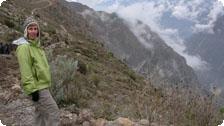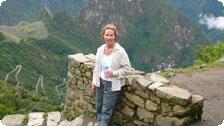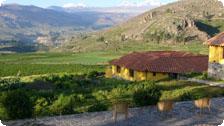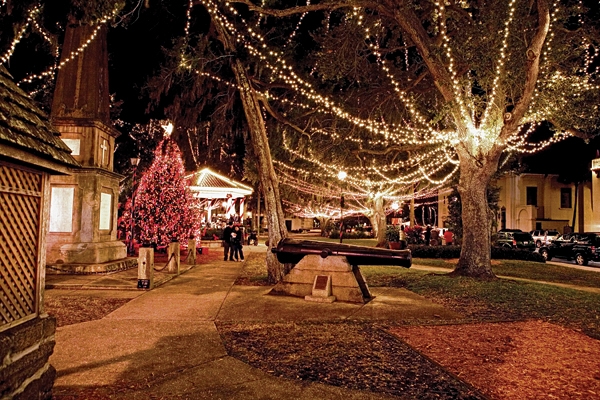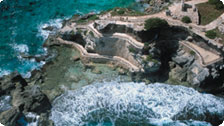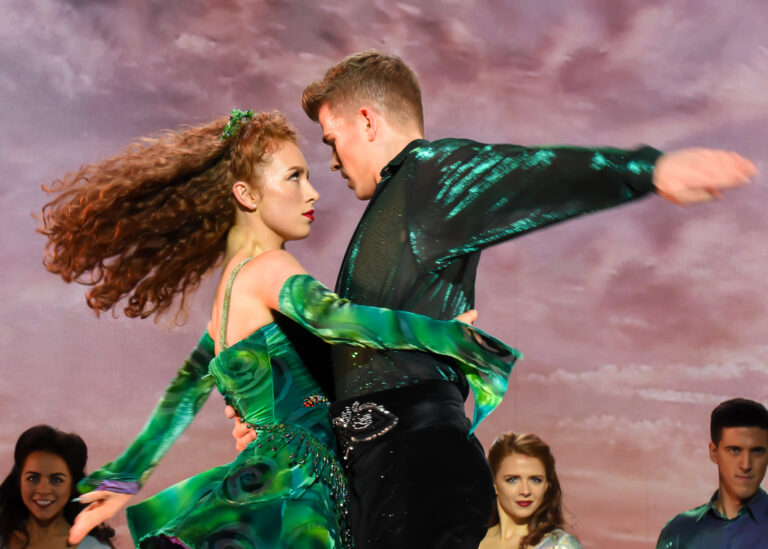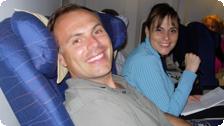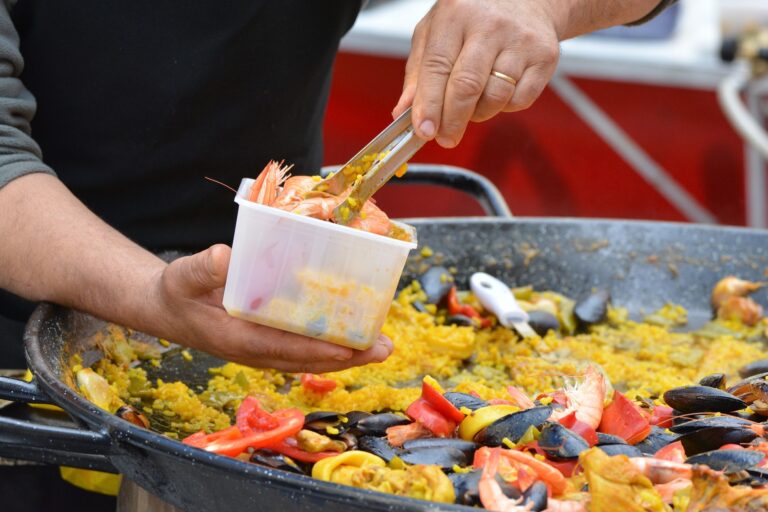Culture: Peru: Andean High
by Janet Bein
I didn’t really find what I was looking for in Peru until we reached the Andes. By that time, my husband and I had been in Peru for over a week. We were traveling with a small (eleven participants) eco-tour group, led by GAP Adventures. Our first stops had been Lima, Pisco, Nazca, and Arequipa. It’s always interesting to visit another country, but I didn’t get really excited until we started seeing wild herds of llama, alpaca, and vicuna, against a backdrop of volcanic peaks.
I might have been happier starting off directly in the Andes. But the longer itinerary gave us a chance to adjust gradually to the altitude. It also helped that our local guide showed us how to roll and chew coca leaves, as we were riding up into the mountains from Arequipa.
GAP Adventure supports “sustainable tourism,” which means staying at small, locally owned guesthouses rather than large, fancy, foreign-owned hotels. Some places were better than others. Our very best guesthouse was the one where we stayed for two nights in the Colca Canyon region of the Andean range. Casa Mama Yacchi is a warm, inviting place, with well-appointed rooms, delicious buffet breakfasts and dinners, beautiful views, and a semi-friendly pet llama in the backyard.
On our first afternoon, we hiked through the village and up the hillside to see some ancient burial sites, carved into the rocky cliffsides. I was delighted to be away from both the city and desert landscapes, to clamber over the dirt and rock paths, surrounded by green terraces and wildflowers, and to breathe as much as I could through my lowlander lungs of the fresh, clean mountain air.
The next day, we took a morning hike along the Colca Canyon edge, in an area that is know to be populated with condors. We all waited for over an hour at a particular spot, dubbed to be a Condor Observation Point, but no condors appeared. So we trudged up the mountain, where our bus was waiting. No sooner did we board the bus than we noticed commotion outside. Quickly exiting, we were treated to seeing two enormous condors swirling around right over our heads. It was almost as if they were showing off for us.
After some more hiking along the canyon, admiring the terraces, we returned to Casa Mama Yacchi for some rest. But I was too excited with my surroundings to take a nap or just hang out in the dining room.
I decided to wander around a bit on my own. It seemed a lot safer in the countryside than in the cities. So when I heard a woman running after me, it didn’t occur to me to feel frightened. Her diminutive size reinforced my feeling of security.
My ability to speak and understand Spanish is very limited. But this woman, who told me her name was Jesús (she said that the name was used for women as well as men in her village) was very motivated to communicate with me. When Jesús asked what I was doing, I said that I was just walking and looking around. Using simple words and a lot of gestures, she offered to walk with me, suggesting we could keep each other company. Then she took a small sickle out of her pocket and said she was on her way to cut food.
My first impression was that she was going to cut something to cook for her family’s supper. We walked quite a ways along the road and I had to make an effort to keep pace with her. The Colca Valley is 3,650 meters above sea level and I was still adjusting to the altitude. The coca leaves were effective at preventing nausea and headaches. But they didn’t do much for my energy level.
Jesús was walking very quickly and it was an effort for me to keep pace with her. But somehow I did. I followed her when she left the road to cross into the fields, and then jumped over a stone fence. She stooped to cut a bundle of grain, picked it up, and then motioned to me to come with her. Together, we climbed over another stone fence where I could see four large cows- her vacas. I’m not a country girl. And just as I was getting used to the idea of being so close to the cows, she pointed out to me that two of them were actually bulls, or torros. Luckily, all four animals appeared to be securely tied to a pole or rock and they were all very peaceful. I waited patiently while she cut additional bundles of grain with her sickle, and helped her carry and distribute the grain.
Throughout this process, Jesús was carrying on an animated conversation with me. She made an effort to speak clearly. Despite my limited vocabulary, we were able to introduce ourselves and exchange information about our ages (she was thirty-four but looked a lot older), the ages of our husbands (she was married to a younger man), and our children (she had five).
On the way back, she led me through a different path into the village in order to stop by her parents’ house and introduce me to them. Then we stopped by her house, and she introduced me to her three youngest children. She invited them to come along with us and accompany me back to my hotel.
I had been gone for more than two hours, and realized that my husband would probably be a bit worried by now. Sure enough, he was standing out front of Casa Mama Yacchi, waiting for me. But his worried expression vanished when he saw me approaching with my village friend and her children.
* * * *
After twenty years of working as a technical writer for the software industry, Janet Lipkin Bein declared herself a “free woman” in January. Although she had squeezed in travel vacations even while working full-time, Janet is now enjoying the ability to travel for longer periods of time. In the past several months, she took a three-week eco-adventure trip to Peru, lived in Israel for two months, and spent a month traveling through Italy and Austria. She also took a short trip to Alaska this summer.
Janet finds that one of the best things about traveling is the people she meets along the way.
Discover more from Tango Diva
Subscribe to get the latest posts sent to your email.
